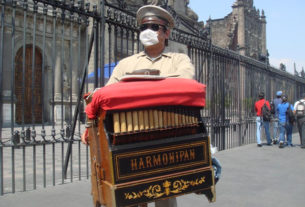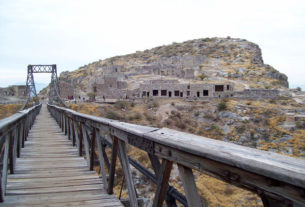Did You Know…?
Mexican cuisine has been one of the country’s most successful cultural exports over the past twenty years or so and most large towns in North America and Europe now boast at least one Mexican restaurant, even if the menu is not necessarily “authentic”. For those wanting to experiment, the basic ingredients for Mexican meals can now be bought virtually everywhere. The increasing popularity of Mexican food has been rivaled only by an extraordinary increase in the consumption of Mexican drinks, Corona beer and tequila included.
Ancient foodstuffs
Archaeologists have also taken much more interest in Mexican food in recent years.
By 1970, studies carried out at various locations, ranging from Tamaulipas in the north of the country to Oaxaca in the south, had gradually led to the conclusion that the earliest plants to be domesticated in Meso-America were corn, beans and squash, and that all three had been domesticated between about 7000 and 10,000 years B.P. (Before Present).
Further research subsequently led most archaeologists and palaeo-botanists to believe that squash was actually domesticated much earlier than corn. Re-evaluating cave samples, originally collected in the 1950s, using an improved carbon-14 dating technique, anthropologist Bruce Smith found that the squash seeds from one location were between 8,000 and 10,000 years old, while the oldest corn and bean seeds were much younger, less than 6,000 years old.
While Smith’s study does appears to confirm that squash was domesticated first, it does not necessarily mean that this squash was domesticated for its food value. Many experts think that early varieties of squash may have been domesticated primarily for their gourds, which could be used as ready-made drinking vessels and fishing floats.
The domestication of squash may have improved life, but it did not fundamentally change it. On the other hand, the eventual domestication of corn, about 7,000 years B.P. marked a true watershed in pre-Hispanic life, enabling the abandonment of a nomadic hunter-gathering existence in favor of settlement in semi-permanent villages. How important was this? In the words of renowned archaeologist Michael Coe, “it was the cultivation of maize, beans and squash that made possible all of the higher cultures of Mexico.”
With the passing of time, the ancient peoples of Mexico domesticated and cultivated many other native plants, including tomatoes, chiles, potatoes, avocados, amaranth, chayote (vegetable pear), cotton and tobacco.
Ancient kitchens
Other archaeologists, working at Teotihuacan, close to Mexico City, have been turning their attention away from how the upper classes lived (and ruled) to focus on the lives of the ordinary residents of suburbia fifteen hundred years ago. At its height (500 A.D.), Teotihuacan was one of the largest cities in the world, with an estimated population of 200,000. Its elaborate water supply and drainage systems and a precisely aligned grid demonstrate masterful urban planning. The city was so prominent that it became a magnet for craftsmen from other far-away regions like Oaxaca and the Gulf Coast (Veracruz). These migrants would have brought their own food ideas and preferences with them, making Teotihuacan an excellent choice for a cosmopolitan eating experience.
What most visitors to this ancient city today do not appreciate is how the average Teotihuacanos lived, how they cooked, and what they ate. But, between 1985 and 1988, cleverly conceived and executed fieldwork by a team directed by Linda Manzanilla of the National University (UNAM), unearthed a wealth of information about ancient food storage, preparation methods and kitchens. Manzanilla has demonstrated that age-old kitchens in Teotihuacan can be located by a combination of traditional archaeological methods (collecting artifacts, debris, pollen and food remains) alongside the microscopic and chemical analysis of the stucco floors in the multi-room apartment complexes used as residences and workshops.
It was already known that the stucco used on floors can absorb, over time, trace amounts of chemicals that serve as indicators of the predominant activities carried out in the room. Soil samples were taken from each square meter of floor and then analyzed for certain key indicators.
High levels of phosphates revealed areas where organic refuse was abundant. This could be a place where food was consumed, or where refuse was discarded. An elevated level of carbonates was assumed to reflect either a place where stucco was processed, or somewhere where tortillas were prepared. The tortilla-making process today still involves the liberal application of lime. A localized higher alkaline reading from the stucco floor was correlated to the location of heat or fire. The color of the soil samples was also checked for any indication of the limits of a particular activity.
Once an outline of the distribution of particular activities had been sketched out, the presence of sodium and iron was investigated. High levels of iron, for example, probably indicate where agave was processed, or where animals were butchered.
The end result? By correlating the various lines of evidence from this particular sixth century apartment, Manzanilla was able to pinpoint the precise locations of many everyday household functions. For instance, three areas where ceramic stoves once stood were distinguished. Each had a dark red stain on the floor, with relatively low carbonate values, relatively high alkalinity, and some ash. Significantly higher phosphate values in a band around this zone suggested an area used for eating. Higher phosphate levels were also encountered outside the dwelling where any refuse had been swept or accumulated.
And what was cooked on these stoves? We can not be certain, but evidence suggests that the residents of Teotihuacan had a varied diet of plants and animals. They not only prepared corn, beans, squash and chiles, but also ate cacti (prickly pear), hawthorns and cherries. For additional protein, rabbits, deer, duck, dogs, turkeys and fish were all on the menu, at least occasionally.
And, lest you think their likely diet sounds too bland, the locals also had access to potatoes and a plethora of herbs and spices, as well as chocolate, chewing gum and tobacco to satisfy their cravings, and various exotic hallucinogens to stimulate their imaginations!
So, next time you savor Mexican food, pause for a moment and remember that your meal may be startlingly similar to a banquet eaten thousands of years ago in any major Aztec, Toltec or Maya city…
This article is the basis for Chapter 1 in the author’s Mexican Kaleidoscope: myths, mysteries and mystique (Sombrero Books, 2016).
Further reading
- Manzanilla, Linda (1996) Soil analyses to identify ancient human activities. Canadian Journal of Soil Science.
Copyright 2003 by Tony Burton. All rights reserved.
Published or Updated on: March 14, 2008


